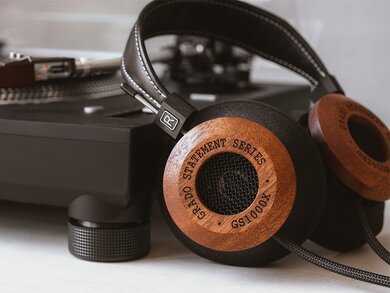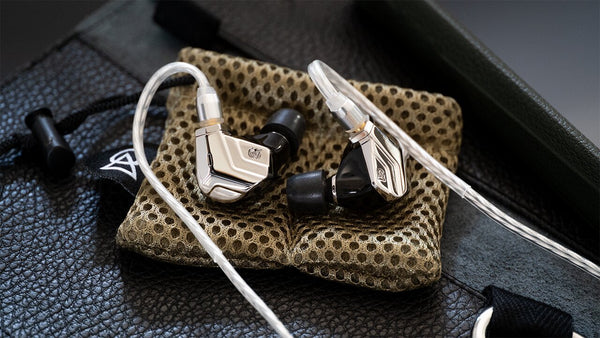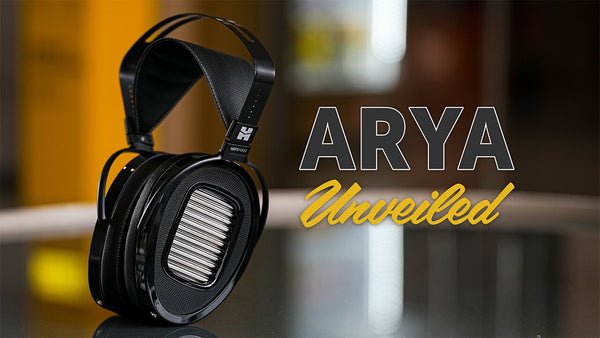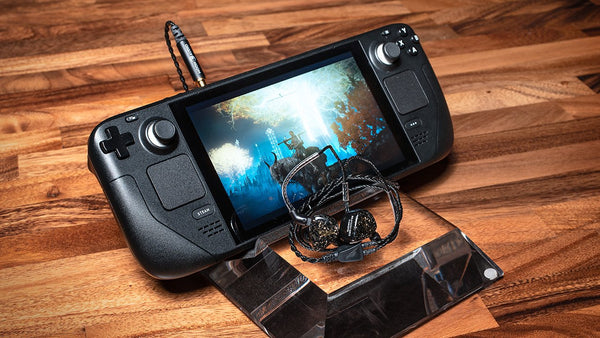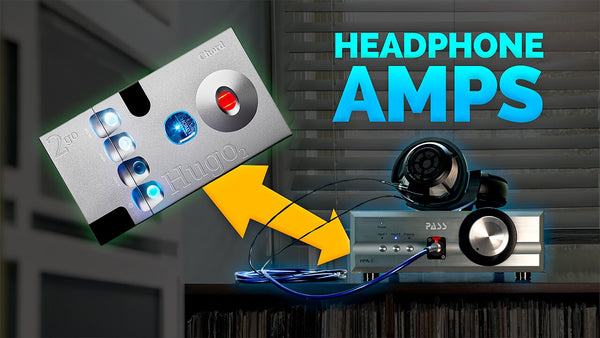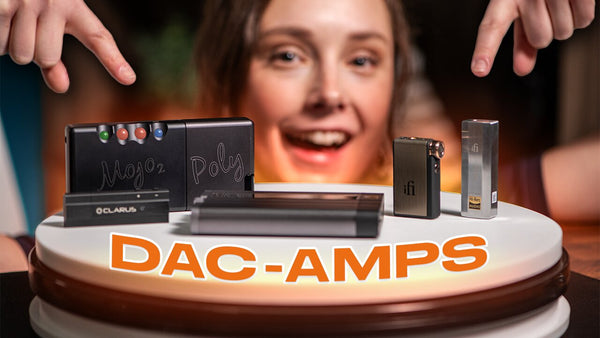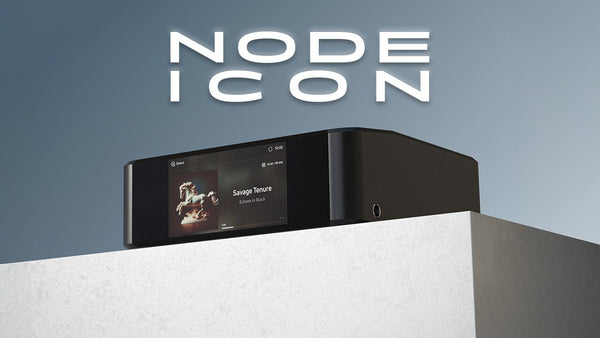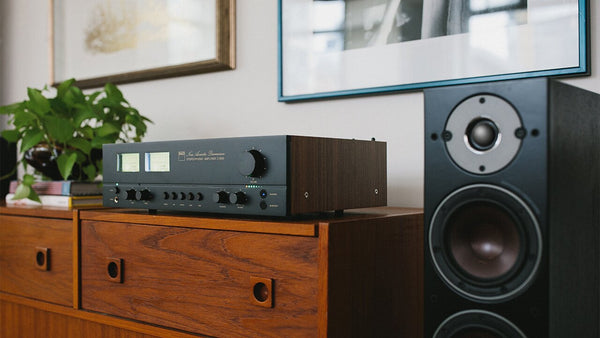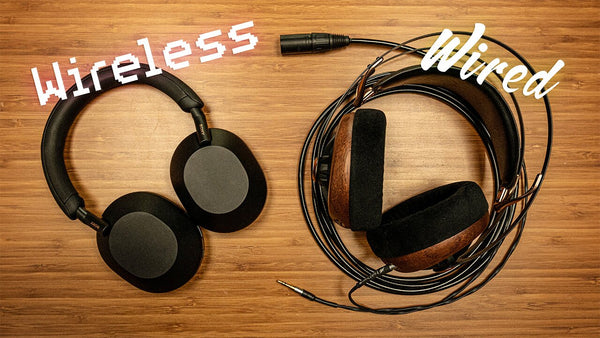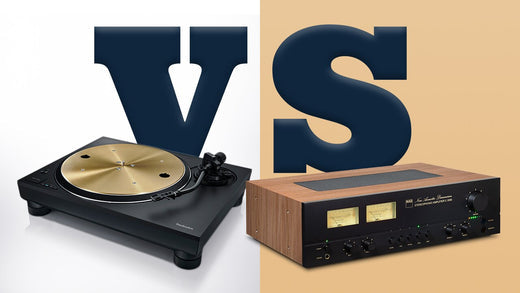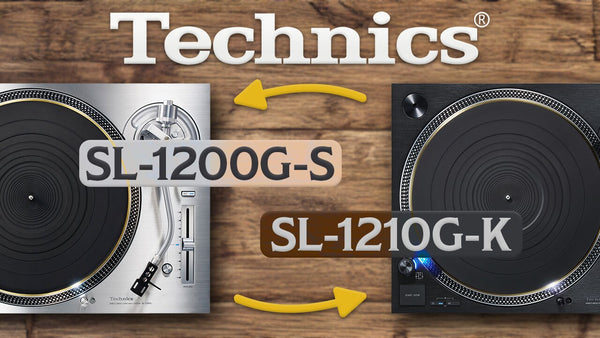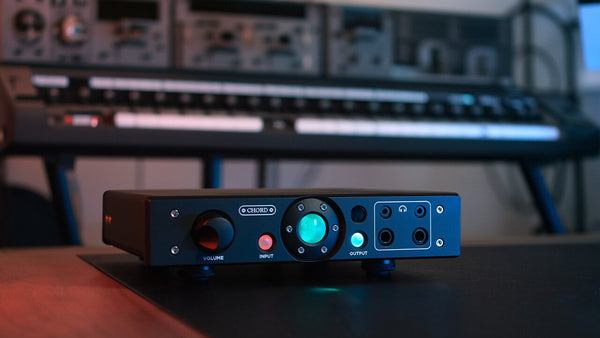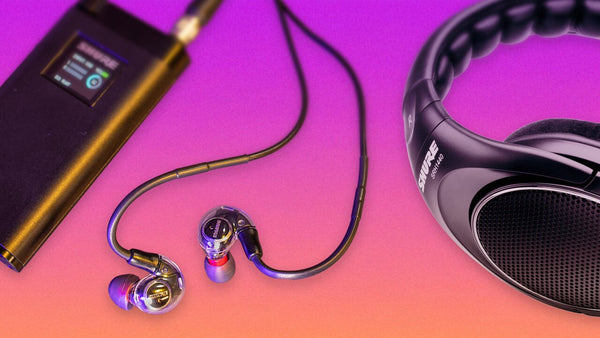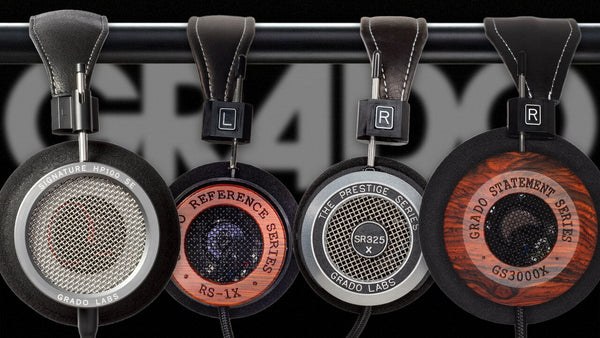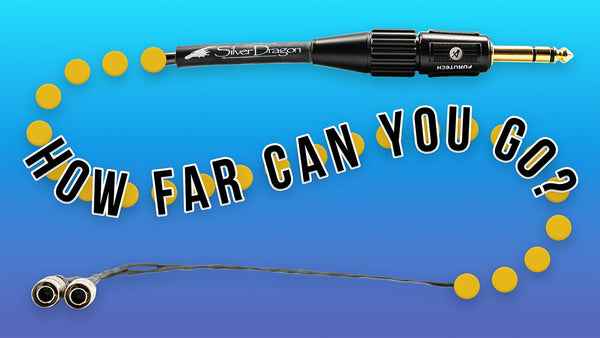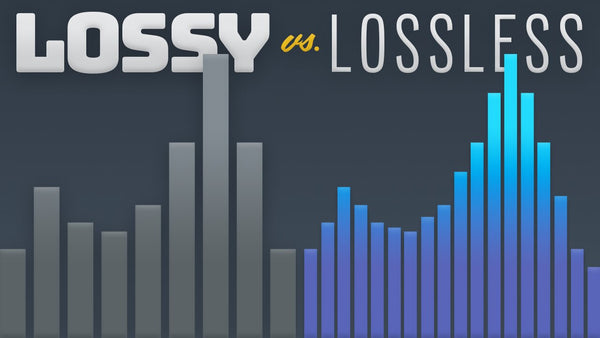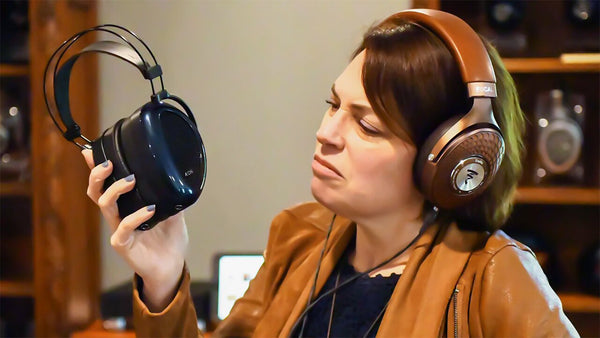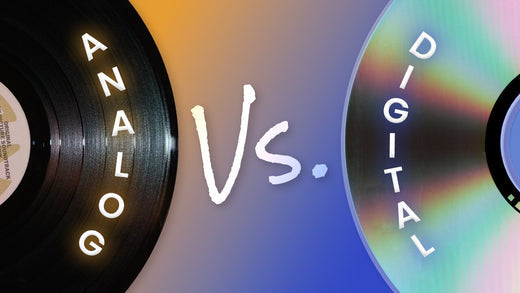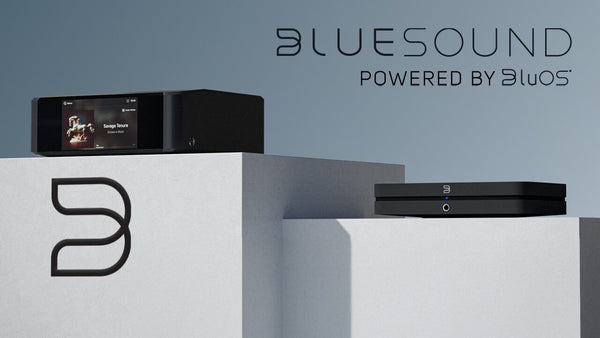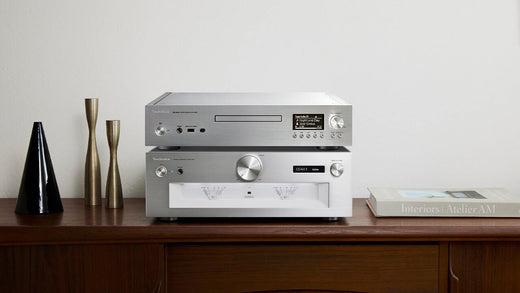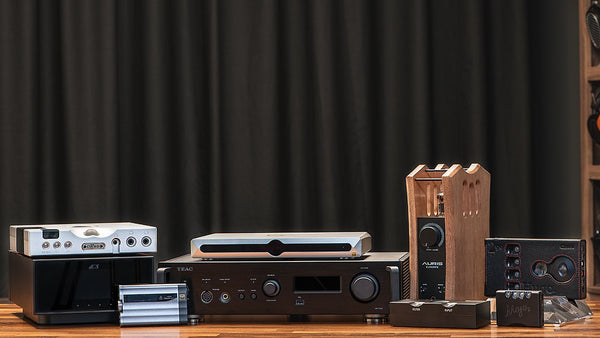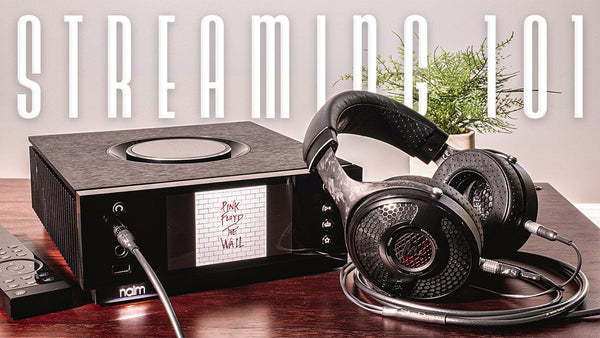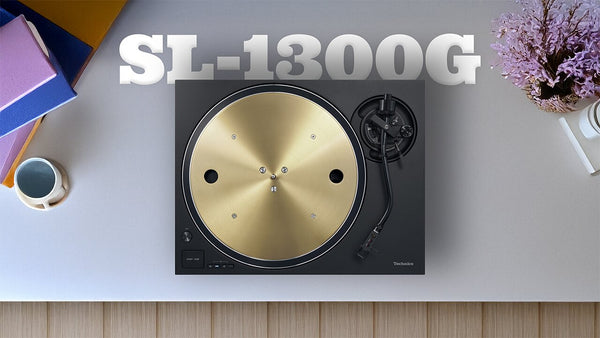Vintage Audio Gear: Top 5 Things to Know Before You Buy
Read Time: Approx. 18 min.

Your Guide to Buying Vintage High-End Audio Gear
With the resurgence of vinyl and physical media, it's fair to say vintage audio has made a comeback. And only naturally, the demand for vintage audio gear has risen too. I get it. There's a certain allure that comes with owning vintage items. For some, it's the craftsmanship and story behind a piece, and for others, it's the pride in knowing that you own something no one can buy on the market today. Maybe you collected trading cards as a child. Or your grandpa had one of those rare quarter collections with only a few left to find. Regardless, it's the never-ending treasure hunt for the one-of-a-kind find or the last piece in a collection that gives vintage lovers a thrill. It's a lot like the audiophile's pursuit of sonic perfection–You're always just a hair away from perfection.
Personally, I'm a shoe lover–a vintage designer shoe lover to be exact. I spend more hours than I'd like to admit searching, watching, and waiting for the perfect vintage find at that too-good-to-be-true price. But as with buying anything vintage, owning and collecting vintage audio gear takes a keen eye, dedication, and most importantly, patience. Even the most seasoned hobbyists can get caught up in the thrill of it and miss out on a great find. So, whether you're a seasoned hobbyist or just dipping your toes into the vintage hi-fi market, here are 5 things you need to know before buying vintage high-end audio gear.
We Tour Drew's NEW Home Listening Room
The Allure of Vintage Audio Gear
Hear Me Out: A misconception I've found among audiophiles is that they only chase the latest and greatest finds. While we're certainly eyeballing and drooling over new pieces that hit the market, there's a large community of audiophiles buying pre-owned and vintage audio gear. For every brand-new unit sold, a used piece is listed. To be clear though, secondhand audio gear and vintage audio gear aren't the same thing. Just because something is being sold used, it doesn't mean it's vintage. I can't tell you how many times I've been shopping online and seen an item listed as 'vintage' only to discover that it's gently used and no more than ten years old. We're talking complete vintage stereo systems and home audio setups from the 1960s, 70s, 80s–that's what we're after.
So, what's all the buzz with vintage audio gear–and why buy it?
Build Quality & Craftsmanship
I know we've all had this experience once or twice. You just purchased something brand new, you're super excited about it, and conveniently enough someone comes through to pop your bubble and say "Man, they just don't make 'em like they used to." If I had a penny for every time I heard that these days, I could make something like they used to. But have you ever caught yourself saying that same thing? I know I have. What was once a saying that used to annoy me, now reigns true more and more every day. As convenience and fast fashion rises, craftsmanship and quality fall.
Now this isn't always true for the high-end audio market. I'd like to think we're one of the exceptions among the sea of manufacturers cutting corners in every other market. You'll rarely find high-end audio manufacturers skimping on craftsmanship and build quality. In a lot of cases, it's one of the cornerstones of a brand's promise to us audiophiles. One brand that comes to mind is Grado Labs. They've been handcrafting headphones in their Brooklyn, NY headquarters since the very first day in 1953. Now that's a company with some truly vintage audiophile-grade headphones, and even their new models today still retain the same craftsmanship and build quality present over 70 years ago.
So, in what cases is vintage audio gear better than brand new? If you ask any audiophile on the street they might argue that turntables aren't built like they used to be. The same can be said for vintage speakers and transformers–while modern manufacturing has improved in many ways, some audiophiles swear by the warm sound of signature speakers from the 60s and 70s, and the build quality of vintage transformers is often exceptional. This extends to classic stereo equipment like power amps and tuners–the build quality of vintage RCA components in particular is often celebrated by enthusiasts. You've got to remember that while a vintage component could've been built with higher-quality materials than that of today, servicing and repairing that unit won't come easily. If you call up a manufacturer asking for a repair on a 30-year-old unit, after they're done laughing, they'll probably recommend you purchase a newer model instead. While build quality and craftsmanship are great, you've got to think about repairs and the difficulty you might run into trying to source these vintage parts. The build quality and craftsmanship of vintage audio gear pieces are case-by-case. Do your research. Compare it to units on the market today. And if you stumble upon a unicorn, consider it your lucky day.

Nostalgia
Arguably, the number one reason people choose vintage is because of nostalgia. Nostalgia is powerful. It can bring us right back to a certain point in time, where, for just a moment, you can experience the same feeling twice. Maybe it's the old Pioneer stereo receiver with a cassette deck that your father had displayed in the living room that you were never allowed to touch. Or it's the subtle crackle of vinyl spinning on a turntable while you watched your grandmother bake in the kitchen. Whatever the case may be people will search high and low for that vintage memorabilia. One of the great things about owning and collecting vintage audio equipment is the story it tells.
Cost Savings
This is really a catch-22. Many will argue that older, vintage gear is cheaper than brand new. Traditionally, buying something used is always less expensive than buying it brand new–but that's not always true. The more popular the component is, chances are the secondhand seller knows that and will use it to their advantage. 10 years ago I imagine you could score a vintage Technics Turntable for a steal, but with the growing popularity of vinyl and new hobbyists emerging every day, you're lucky if you find one in your price point. This is especially true for sought-after vintage Sony equipment and classic equalizers, which can command premium prices due to their reputation and sound quality. Likewise, incredibly rare components can be priced astronomically high.
On the flip side, you will stumble upon vintage pieces worth every penny and more. Shop smart and take into account things like condition, build quality, and any future maintenance costs. One of the best things you can do is compare that unit to another like it on the market today. Ask yourself, am I really saving by buying the vintage unit? Or is a brand-new unit the better choice for me? Be wary of prices that seem too good to be true, but also don't hold back on haggling for a good deal. Watch the trends and only buy what's 100% worth it to you.
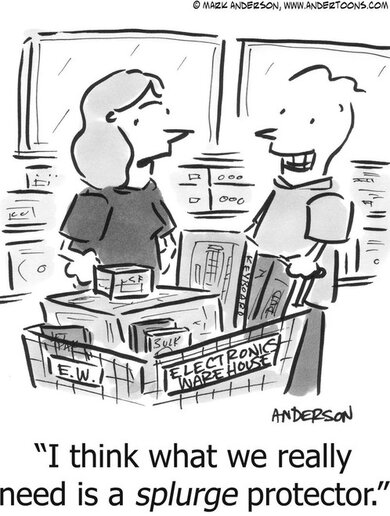
Where to Buy Vintage Hi-Fi Gear
There are a lot of great places to score secondhand audio gear from dedicated online retailers to forums and Facebook Marketplace. As with anything, it's important to watch for scammers and any posts that raise red flags. If the pictures are grainy or there's little to no information in the product description, it doesn't necessarily mean the listing's no good. A lot of vintage audio gear is...well...vintage. You could be dealing with a unit covered in dust from spending years in an attic or a pristine vintage stereo system that has been babied in the home theater since 1965. When shopping for components like tape decks, be especially careful to verify their working condition, as these mechanical devices often require maintenance. So, where should you look?
Craigslist / Facebook Marketplace
- Great way to find local hi-fi gear
- Can be tested before purchase if the seller is close
- Chance to score some hidden gems at a decent price
- Ability to contact Seller
- Watch for Scammers
Ebay
- Opportunity to bid
- Seller Ratings & Feedback
- Ability to contact Seller
- Chance to score some hidden gems at a decent price
- Return Policies
- Watch for Scammers, Fraudulent posts
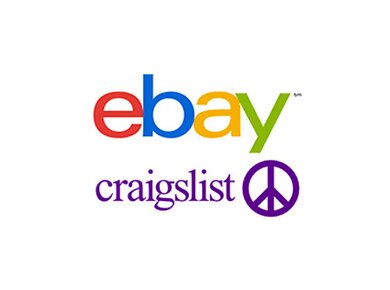
Audiogon
- Opportunity to bid
- Seller Feedback
- Ability to contact seller
- Return Policies
- Forums, search by brand
- Seller directory
US Audio Mart
- A lot of inventory from individual sellers
- Seller Feedback
- Ability to contact Seller
- Seller information like location, payment methods, etc.
These are just some of the top websites to get you started on your vintage hi-fi search. There are many options–some better than others–offering a dedicated space to shop hi-fi hidden gems.
5 Things to Know Before You Buy
So you're finally ready to pull the trigger on that piece of vintage audio gear you've been dreaming of and you're ready to dive in head first. But you're a smart shopper and you know that buying vintage audio gear is a meticulous process that can't be rushed. Sure it's not rocket science but if it's your first time buying vintage hi-fi gear you'll want to consider these 5 points as a checklist for yourself.
1. Do Your Research
This might seem like a no-brainer. Of course, you'll do your research, but we're not talking about an hour or two on the most popular secondhand hi-fi websites. Become an expert on the product you want to buy. Learn that product better than the person selling it to avoid getting swindled or deceived. We want to believe that everyone selling secondhand gear has good intentions and that what they're advertising is truthful, but you can never be too sure so it's important to keep your wits about you. We always preach about the importance of making an informed buying decision. That's why we expertly review products and provide as much information as possible to customers, so they can make a knowledgeable, informed buying decision.

2. Shop Around & Watch Prices
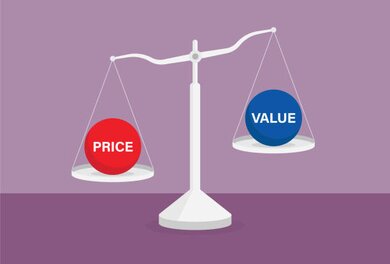
Being an audiophile is an expensive hobby–there's no doubt about it. So if you're buying secondhand vintage audio gear, you want to score a deal. As I mentioned earlier, nostalgia is what's hip right now. Everybody wants something vintage. And when demand goes up but supply stays the same, you get high prices. I remember when you could score vinyl records at a thrift store for a quarter or two, and now you're lucky if you find anything priced under $5. If you're searching for the same vintage solid-state amplifier or loudspeakers that at least 100 other people on HeadFi are looking for too, it's safe to assume that listing prices are astronomically high, so it's best to wait until the hype goes down.
And sometimes, vintage pieces are expensive for no reason. Just because something is considered "vintage" it doesn't always mean it's worth a pretty penny. Ask yourself if is it really worth it to spend that kind of money when you can buy something new. Manufacturers are aware of the allure of vintage and many are leaning into that, bringing back product designs from the 1970s but with modern technology and features. Take Astell&Kern for example. Tube amplifiers have grown increasingly popular recently, so what do they do? Lean into that trend and create a DAP, the SP3000T with real built-in vacuum tube amplifiers to cater to those who love analog warmth.
So, how do you know if you're getting a good deal? Luckily, there are many hi-fi retailers to choose from so you can shop and compare prices. Specifically, HiFi Shark is the blue book of hi-fi audio gear. It'll show you where a component is being sold, for how much, and how long the listing has been active. This is a great tool to compare prices, authenticate the seller, and avoid duplicate listings. Audiogon is a certified resell website, where you can buy and sell secondhand components. Here you'll find forums, search by brand, and find a directory of reputable dealers selling gear on Audiogon. You've also got US Audio Mart and Head-Fi –great for gathering information, doing research, and finding audiophiles selling one-off gear.
These websites combined with extensive research and knowledge of the product should steer you in the right direction, inching you closer to your next piece of vintage hi-fi audio gear. Once you've found an item you're content with, start digging deeper and asking questions.
3. Inquire & Ask for Pictures
In most cases, if you're shopping for vintage audio gear online the posting will contain some pictures of the outside of the unit, some tech specs in the description, and denote any issues. Aside from the price, the condition of the unit is incredibly important. Ask for additional pictures–Of the outside and inside. A dent, scratch, or ding on the outside chassis of a power amplifier is one thing, but any internal damage impacting the unit's performance needs to be identified. Any seller who isn't going to provide pictures–be wary. Walk away from it. If they refuse to show you what's under the hood, chances are the item's no good. A seller wanting to make a sale will be more than happy to show you as many pictures as you'd like. This is also a great time to ask for information on the packaging. Do they have the original box? How will the unit be shipped?
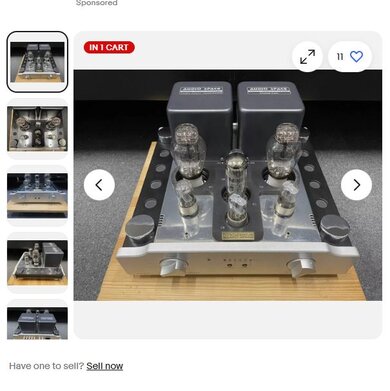
4. Try Before You Buy
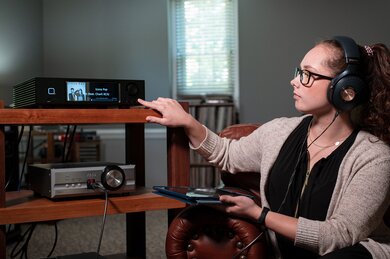
If you're shopping exclusively online for vintage gear you probably won't get the opportunity to test it out before you buy. If you get lucky and find something online that you can local pick up in person, communicate your desire to test the product beforehand. Be cautious of anyone who denies you without explanation. That could mean there's internal damage to the unit they already know about but don't want to disclose. If you do get the chance to test out a piece of gear in person, come with a high level of knowledge about the product. Figure out how to test it ahead of time. Bring any additional gear you plan to pair the component with like headphones, cables, etc., and test every single knob, button, input, and output. If possible, ask the seller if they could open up the unit so you can get a quick peek at the internals.
If you aren't able to test the gear in person, ask the seller if they can compensate by sending additional photos. Maybe you can jump on a Facetime call and see the unit in action. Any seller who refuses these requests may be up to no good so use your best judgment during this process.
5. Anticipate Additional Service Costs
Unless you buy a vintage piece of gear that's been babied and doesn't look a day over 5 years old, anticipate additional service costs. If the unit arrives with a layer of dust, consider getting it cleaned, refurbished, and restored by a professional. Unless you're an expert in restoring vintage gear, this wouldn't be the time to attend YouTube University and do it yourself. Older units require upkeep and replacement parts and the last thing you want to do is accidentally shock yourself when you plug in a 1960s amplifier you thought was fine. And remember–warranties are typically non-existent for vintage gear, so factor in potential repair costs when budgeting.
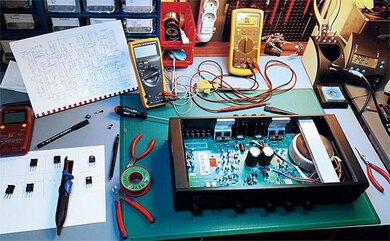
Electrolytic capacitors have a life of 20 to 30 years and once that life has hit, they start to expand like lithium batteries, leading to possible leakage and the need for replacement. Even if the unit has been vetted by the seller to be safe and in great working condition, it's worth it to double-check and get a second opinion from a trusted professional. They can inspect the unit and maybe even identify any issues you and the seller missed. It'd be a shame to spend money on a unit just for it to break down once you plug it in.
"Once you buy the vintage piece of gear, don't turn it on. Do not plug it in. Open it up, take it to a respectable repair company, ask them to check all the capacitors, and ultimately replace them if they need it." - Drew Baird, P.E., Moon Audio CEO & Founder
Vintage-Inspired Audio Gear
Vintage audio gear is great but it's not for everyone. Some people want the look of something vintage but with modern technologies. Manufacturers are aware of the allure of vintage and many are leaning into that, bringing back product designs from the 1970s but with modern technology and features. You can get vintage-inspired equipment that has modern hookups like Bluetooth connectivity or USB-C outputs but still has the design of a historic piece. Here are some great examples of vintage-inspired gear for the audiophile who wants a certain aesthetic but with premium features.
NAD C 3050 Stereophonic Amplifier
The C 3050 is NAD Electronics' modern take on the vintage NAD 3030 Stereo Amplifier from the 1970s. Released in honor of the company's 50th anniversary, the C 3050 has a true 70s vintage aesthetic with illuminated vintage VU meters and copious control knobs on the front panel. That combined with the walnut-finished vinyl-clad cabinet makes it truly retro-looking. The C 3050 is a powerful integrated amplifier that can deliver up to 100 watts per channel, has a built-in phono preamplifier, and HDMI eARC port–among so much more.
Grado Labs HP100 SE Headphones
A hi-fi brand representing craftsmanship and quality, Grado Labs has been making headphones the same way for over 70 years. Great with classical, strings, and more, the HP 100 SE represents the future of Grado Over-Ear Headphones, taking a nod from its past.
In celebration of Joseph Grado's 100th birthday, Grado Labs introduces the HP100 SE Headphones as a special edition pair, honoring the legacy of Joseph Grado and the remarkable HP1 Headphones released by him in 1990. As always, the HP100 SE is hand-assembled in Grado's Brooklyn, NY headquarters.
TEAC VRDS-701 CD Player, USB DAC
CD Players are hip again! Yep you heard it, the rising popularity of physical media has made CDs hot again. The TEAC VRDS-701 CD Player, USB DAC is the all-in-one system perfect for someone who might not have all the external pieces and wants one unit that houses it all. As the most feature-rich unit it's a great addition to your audiophile setup and its ability to play CDs and stream music digitally makes it the catch-all of high-end audio gear. Whether it's your first all-in-one unit or your third, you'll be thrilled with the organic sound of the VRDS-701's Delta Sigma Discrete DAC and the tiny details it'll bring to the surface.
Verdict
What's old is what's new and the thrill of researching, vetting, and owning vintage hi-fi audio gear is alive and well. As a lover of vintage products myself, there's a great sense of pride you get in owning something unique. Something that can't be replicated today. Whether it's a vintage amplifier, headphones, or subwoofer, vintage hi-fi audio gear should be vetted. Unfortunately, most vintage hi-fi gear is sold exclusively online so it's incredibly important to do your research, watch and compare prices, and only buy what you feel 100% secure about. If you've got the money, patience, and dedication to shop vintage, you won't regret it.
But buying vintage isn't your only option these days. The allure of vintage has created an opportunity for manufacturers to reimagine new gear. Companies are rolling out new designs of a 70s classic with state-of-the-art technology and premium features. You can get the best of both worlds: A modern-day unit with a vintage design. From the look of it, you wouldn't know the NAD C 3050 Stereo Amplifier isn't vintage unless you peeked underneath the hood. The C 3050 is the perfect example of a vintage-inspired piece of gear. And I bet if you invited over your non-audiophile friends they wouldn't even know the difference.
Amp up the performance of your vintage or vintage-inspired gear with a Dragon Audio Cable. Why? Our Dragon Audio Cables are built with high-quality materials to deliver you the best possible performance. Maybe your vintage tube amp didn't come with a power cable or it's on its last leg. By upgrading to one of our Dragon Power Cables you're ensuring a strong, stable connection that rejects all EMI and RFI interference. You can rest assured that your gear will perform exceptionally well without any flaws or flukes. Join the masses and fall in love with what vintage audio gear has to offer.
Featured Products
Related Videos
We Tour Drew's NEW Home Listening Room
Our Top 3 Tube Headphone Amps & Why We Love Them
Audiophile Eye Candy: Tour Our HQ's Demo Room

